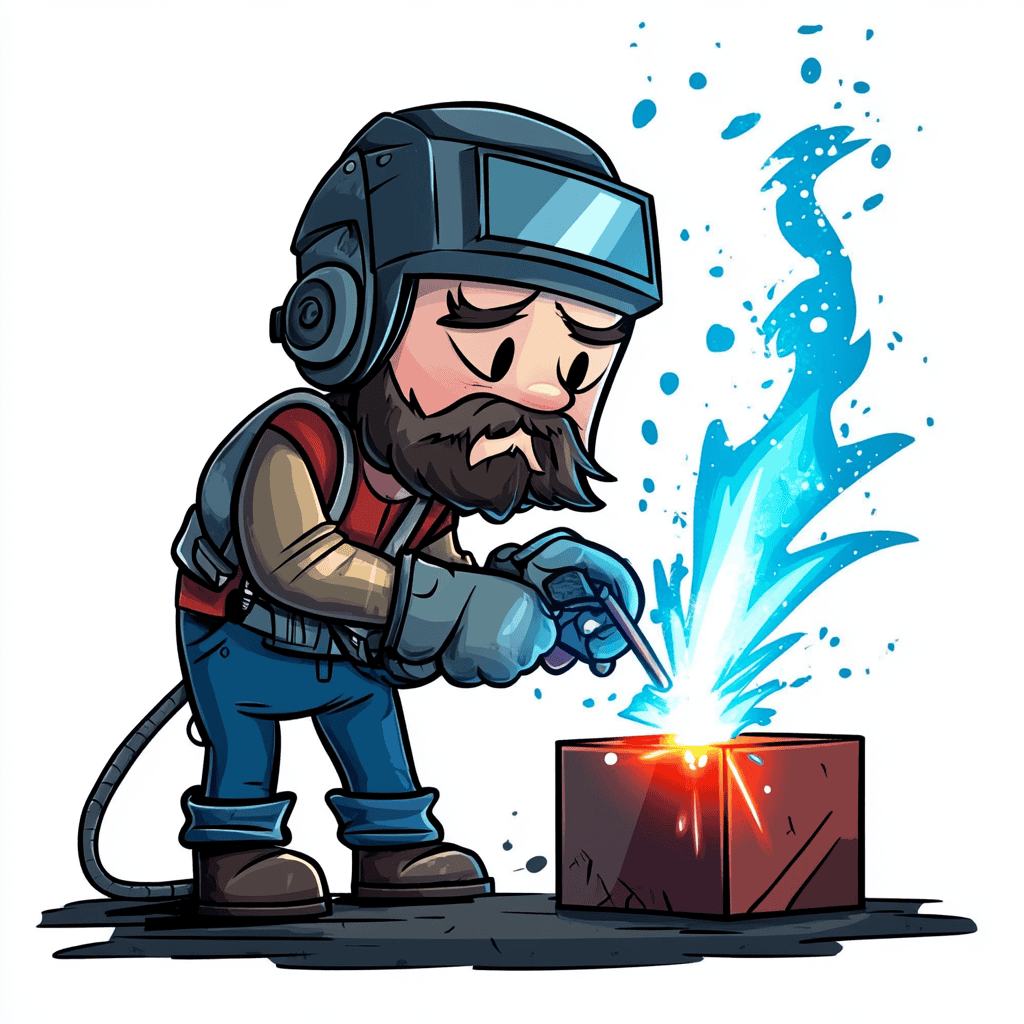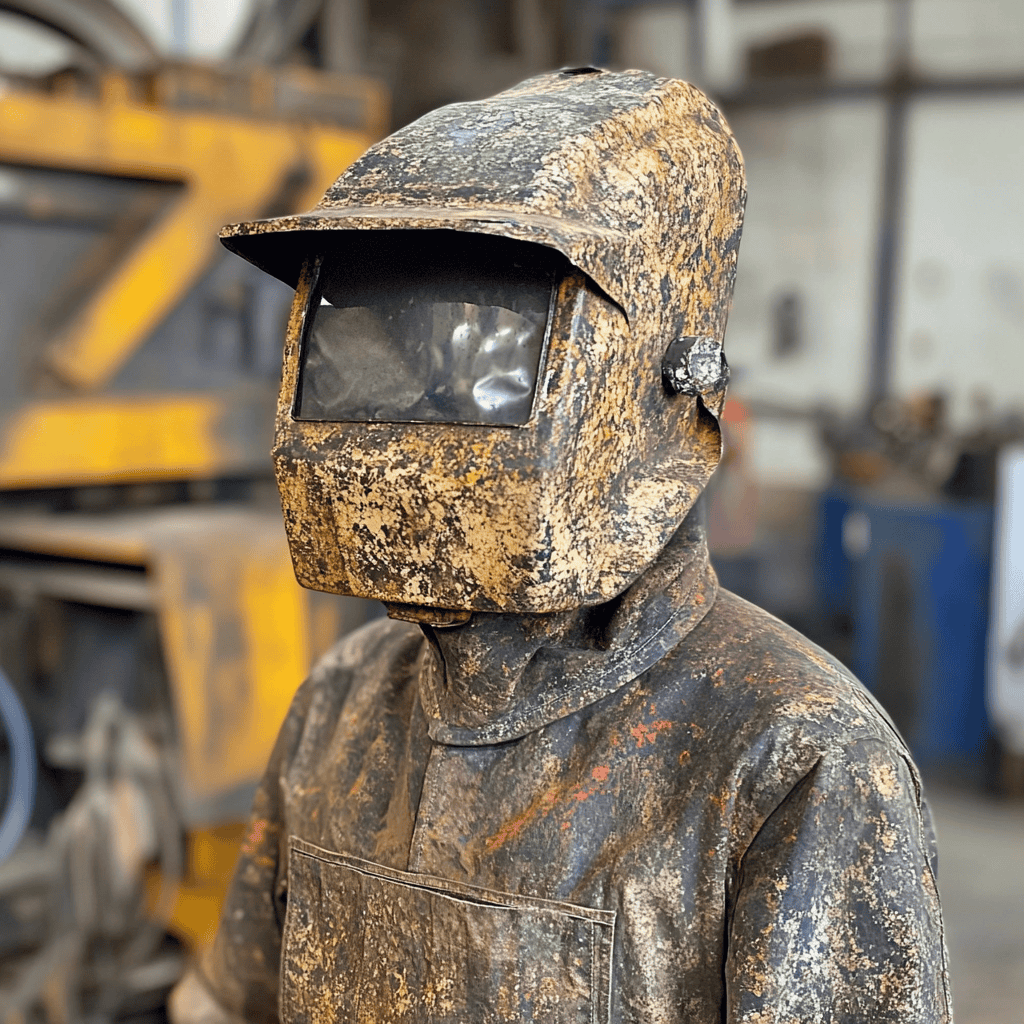Table of Contents
How Much Does A Weld Tech Make?
Introduction
Welding technology is a crucial profession that plays a vital role in industries ranging from construction and automotive to aerospace and manufacturing. Weld techs, or welding technicians, are skilled professionals responsible for welding, inspecting, and maintaining equipment essential to creating and repairing metal structures and components. If you’re considering a career in welding technology, one of the first questions you might have is: How much does a weld tech make? This article breaks down earning potential and the factors that influence salaries in this rewarding field.
What Does a Weld Tech Do?
Weld techs perform various tasks that go beyond simply joining metal parts. Their responsibilities include operating advanced welding equipment, inspecting welds for quality, and ensuring that finished products meet industry standards. Weld techs may specialize in techniques such as TIG (Tungsten Inert Gas), MIG (Metal Inert Gas), or arc welding, and many are also skilled in robotic welding operations.
Industries employing weld techs span a wide range, including construction, oil and gas, shipbuilding, aerospace, and automotive manufacturing. These professionals are integral to creating everything from skyscrapers and pipelines to airplanes and cars.
How Much Does A Weld Tech Make?
Average Salary for Weld Techs
The salary for weld techs in the U.S. varies widely depending on factors like experience, industry, and geographic location. On average, weld techs earn between $45,000 and $60,000 annually, with hourly wages typically falling in the range of $20 to $30 per hour. Entry-level positions generally start at the lower end of the spectrum, while experienced professionals or those with specialized certifications can command salaries significantly above the average.
Entry-Level Weld Tech Salaries
For individuals just starting their careers in welding technology, salaries usually range from $35,000 to $40,000 annually. These positions often involve basic welding tasks and require supervision, as workers gain hands-on experience and build their skills. While the pay may be lower initially, entry-level positions offer valuable opportunities to learn industry standards, techniques, and the operation of essential tools and equipment.
Mid-Level and Experienced Weld Tech Salaries
As weld techs gain experience and refine their skills, their earning potential increases. Professionals with 5–10 years of experience typically earn between $55,000 and $70,000 annually, especially if they have expertise in advanced techniques such as robotic welding, TIG welding, or underwater welding. Experienced weld techs are often sought after for more complex projects and supervisory roles, which come with higher pay and greater responsibility.
Specialized Skills and Certifications
Weld techs with specialized certifications or expertise in high-demand areas can earn significantly more. For instance:
- Certified Welding Inspectors (CWIs): Earn an average of $70,000 to $100,000 annually, as they are responsible for ensuring the quality and safety of welding work.
- Underwater Welders: One of the highest-paying specialties, with salaries often exceeding $100,000 annually, due to the hazardous and technical nature of the work.
- Robotic Welding Specialists: Skilled in operating and programming robotic welding systems, these professionals can earn upwards of $80,000 annually.
Factors Influencing Weld Tech Salaries
Several factors significantly impact a weld tech’s earning potential, from the industry they work in to their level of experience and the geographic location of their job.
Experience
Experience remains one of the most significant determinants of a weld tech’s salary. Entry-level weld techs earn between $35,000 and $40,000 annually, as they typically perform simpler tasks under supervision. Mid-level professionals with several years of experience can expect earnings in the range of $55,000 to $70,000 annually, while seasoned experts or those with specialized skills often surpass $80,000. Advanced roles, such as supervisors or inspectors, typically require extensive experience and offer correspondingly higher pay.
Industry
The industry in which a weld tech works can lead to significant salary differences. Industries that rely on specialized or high-stakes welding processes tend to offer higher pay.
- Oil and Gas: Weld techs in this sector often earn $70,000 to $100,000 or more, reflecting the hazardous and demanding conditions of the job. Welding on pipelines, rigs, or refineries requires precision and resilience, which justifies the higher pay.
- Aerospace: Aerospace welders fabricate and repair high-precision components for aircraft and spacecraft, earning an average of $75,000 annually or more. The strict quality standards and advanced materials used in this industry elevate both the complexity and pay of the work.
- Manufacturing: In this sector, weld techs fabricate metal parts, equipment, and tools. Salaries typically range from $50,000 to $70,000, depending on the complexity of the tasks and the company’s scale.
On the other hand, lower-paying industries, such as general construction or small-scale fabrication, may offer salaries averaging $40,000 to $50,000 annually due to less specialized work and smaller profit margins.

Location
Geographic location plays a crucial role in determining a weld tech’s earnings. In regions with a high demand for weld techs or where the cost of living is elevated, wages tend to be higher. For example:
- States like Alaska, Texas, and California often offer higher salaries due to the prevalence of oil, gas, and industrial projects.
- Urban areas typically pay more than rural ones because of increased demand for skilled labor and higher living costs.
- Regions with booming industries, such as the Gulf Coast (oil and gas) or the Pacific Northwest (aerospace), offer lucrative opportunities for weld techs willing to relocate.
Certifications and Education
Certifications significantly impact earning potential. Credentials from organizations like the American Welding Society (AWS), such as the Certified Welding Inspector (CWI) or Certified Robotic Arc Welding (CRAW), demonstrate advanced skills and expertise. These certifications often result in salaries exceeding $70,000 annually.
Formal education in welding technology, whether through vocational schools, apprenticeships, or associate degree programs, can also give candidates an edge in securing higher-paying positions. Employers often value weld techs who bring both technical knowledge and hands-on experience to the table.
Summary
The earning potential for weld techs varies widely based on experience, industry, location, and certifications. While entry-level positions provide a strong foundation with salaries starting around $35,000 annually, weld techs can significantly increase their income through specialization, advanced skills, and certifications. High-paying industries such as oil and gas or aerospace offer lucrative opportunities for skilled professionals, while geographic flexibility can further enhance earning potential. For those willing to invest in continuous learning and seek out high-demand roles, welding technology offers a rewarding and financially secure career path.
Location
Geographic location plays a significant role in determining how much a weld tech can earn. Certain states and regions with a higher demand for skilled welders tend to offer better compensation. For instance, states like Alaska, Texas, and California are known for their robust industries, such as oil and gas, aerospace, and construction, which require specialized welding expertise. In these regions, weld techs can expect salaries significantly above the national average due to the specialized nature of the work and the economic importance of these industries.
Urban areas also typically provide higher wages compared to rural locations. Cities with thriving industrial or manufacturing sectors, such as Houston, Los Angeles, or Seattle, often have a higher demand for skilled welders, leading to increased pay. However, the cost of living in urban areas can offset the benefits of higher wages. Weld techs working in rural locations may find lower salaries, but the reduced cost of living can make these positions equally or more financially viable. Geographic mobility can be a key strategy for weld techs seeking higher pay, particularly if they are willing to relocate to high-demand regions.
Certifications and Education
Certifications and formal education are critical factors that influence a weld tech’s earning potential. Organizations like the American Welding Society (AWS) offer credentials that demonstrate advanced skills and expertise, giving weld techs a competitive edge in the job market. Certifications such as Certified Welding Inspector (CWI) or Certified Robotic Arc Welding (CRAW) are particularly valuable. These credentials validate a tech’s ability to perform specialized tasks and often lead to salaries exceeding $80,000 annually, especially in high-demand industries like aerospace and oil and gas.
In addition to certifications, formal education in welding technology can further enhance career prospects. Vocational training programs or associate degrees provide foundational knowledge and hands-on experience, making candidates more attractive to employers. Some programs also incorporate advanced training in robotic systems or cutting-edge techniques, which can open doors to higher-paying roles. Investing in continuous education and certification can significantly boost earning potential and create opportunities for career advancement.
Type of Work
The type of employment and working conditions greatly influence a weld tech’s earnings, as well as the stability and long-term benefits associated with the role. Weld techs have the flexibility to choose between freelance or contract work, field positions, or shop-based roles, each with unique advantages and challenges.
Freelancers and Contractors
Freelancers or independent contractors often earn higher hourly rates than their full-time counterparts due to the specialized and short-term nature of their projects. These weld techs typically take on jobs that require advanced skills, such as repairing industrial equipment, working on custom fabrication projects, or providing specialized services like robotic welding setup.
While the pay can be lucrative—often exceeding $40 per hour for highly skilled contractors—this type of work lacks the financial stability of permanent employment. Freelancers generally do not receive benefits such as health insurance, retirement plans, or paid leave, which can significantly impact long-term financial security. Moreover, contractors must account for potential gaps between projects, which can disrupt income flow. Success in freelance welding often requires strong networking skills, a solid reputation, and the ability to manage the business aspects of self-employment, such as invoicing, marketing, and tax preparation.
Fieldwork Positions
Fieldwork positions involve traveling to job sites to perform welding tasks in various environments. These roles often pay higher wages due to the demanding nature of the work, which may include long hours, exposure to hazardous conditions, and the need for adaptability. For example:
- Offshore Oil Rigs: Weld techs on oil rigs may work extended shifts in isolated locations, earning premiums for their specialized skills and the challenging nature of the environment.
- Construction Sites: Field welders often handle structural welding for buildings, bridges, or pipelines, requiring precision and the ability to work in varying weather conditions.
- Industrial Maintenance: Weld techs traveling to factories or power plants for equipment repairs can earn additional pay for the urgency and complexity of the tasks.
Fieldwork positions also often include additional perks, such as travel allowances, hazard pay, and overtime compensation, which further enhance earnings. However, these roles require weld techs to be highly adaptable and willing to relocate or endure physically demanding conditions.
Shop-Based Roles
Shop-based positions provide a more predictable and stable work environment compared to fieldwork or freelancing. Weld techs in these roles typically work in controlled settings, such as manufacturing facilities, fabrication shops, or assembly plants. These environments allow for consistent schedules, access to advanced equipment, and fewer safety risks than fieldwork.
While shop-based roles tend to offer lower pay than fieldwork positions, they often come with valuable benefits, including health insurance, paid leave, and retirement contributions. These jobs are ideal for weld techs who prioritize stability and work-life balance. Additionally, shop-based roles provide opportunities to specialize in repetitive tasks, such as mass production or assembly line welding, which can lead to expertise in specific techniques and career advancement.
Balancing Income and Job Satisfaction
Choosing the right type of work involves balancing earning potential with personal preferences and career goals. For weld techs focused on maximizing income, fieldwork or contract roles offer higher pay but may require sacrifices in stability or personal time. Conversely, shop-based positions provide a steady income and a predictable schedule, making them attractive for those who value consistency and long-term benefits.
Weld techs seeking career advancement can benefit from gaining experience in both types of roles. Fieldwork provides exposure to diverse challenges and industries, while shop-based work allows for the development of specialized skills in a structured environment. By aligning their career path with their goals and risk tolerance, weld techs can find fulfilling opportunities that suit their financial and professional aspirations.
Benefits Beyond Salary
In addition to earning competitive salaries, weld techs often enjoy a range of benefits that enhance their overall compensation and work-life balance. These benefits, provided by many employers, contribute significantly to the financial and personal well-being of weld techs, making the profession even more rewarding.
Health Insurance
Health insurance is one of the most common benefits offered to weld techs, covering essential medical, dental, and vision care. Comprehensive health plans help workers manage routine check-ups, medical emergencies, and specialist visits without incurring significant out-of-pocket expenses. Access to employer-sponsored health insurance is particularly valuable in fieldwork or industrial environments where the risk of minor injuries or exposure to hazardous conditions is higher.
Retirement Plans
Many employers contribute to retirement savings plans, such as 401(k)s or pensions, helping weld techs build a secure financial future. Some companies offer matching contributions, significantly boosting retirement savings over time. This benefit is especially valuable for those planning long-term careers in welding technology, providing a stable income after they leave the workforce.
Paid Time Off
Paid time off (PTO) is another key benefit, allowing weld techs to take vacation days, sick leave, or holidays without losing income. PTO helps workers maintain a healthy work-life balance, recharge from physically demanding tasks, and address personal or family needs. For weld techs in demanding industries, having paid time off contributes to overall job satisfaction and productivity.
Additional Perks
Many welding roles come with unique perks that enhance earning potential and job satisfaction:
Travel Pay: Weld techs who work on field assignments or in remote locations may receive travel allowances or reimbursements.
Overtime Rates: Overtime pay can significantly boost income for weld techs who work beyond standard hours, often at 1.5x or 2x their regular hourly rate.
Hazard Pay: In industries like oil and gas or offshore welding, workers may receive hazard pay for operating in extreme conditions, such as confined spaces or under water.
These additional benefits make the profession more appealing, especially for those willing to take on challenging assignments or long hours.
Career Advancement Opportunities
Weld techs enjoy numerous opportunities for career advancement, allowing them to increase their earning potential, specialize in high-demand areas, and take on leadership roles. These pathways not only enhance financial stability but also provide professional fulfillment and recognition within the industry.
Certified Welding Inspector (CWI)
Becoming a Certified Welding Inspector (CWI) is one of the most lucrative and respected advancements for weld techs. CWIs are responsible for inspecting welds, ensuring they meet quality and safety standards, and maintaining compliance with industry regulations. This role typically commands higher salaries, often exceeding $80,000 to $100,000 annually, and offers opportunities to work in supervisory or consulting capacities.
Supervisory Roles
Experienced weld techs can advance into supervisory positions, managing welding teams or overseeing projects. Supervisors coordinate schedules, ensure quality control, and handle administrative tasks, such as budgeting and reporting. These roles offer a mix of hands-on and managerial responsibilities, with salaries reflecting the added leadership duties.
Specialized Welding
Specializing in high-demand welding techniques can significantly increase earning potential. Some of the most sought-after specialties include:
- Underwater Welding: Welders who work underwater to repair ships, pipelines, or offshore rigs can earn upwards of $100,000 annually due to the technical expertise and risk involved.
- Robotic Welding: Operating and programming robotic welding systems is a growing field, with specialists earning premium wages for their advanced skills.
Specialized welders often find opportunities in niche industries, such as aerospace, defense, and renewable energy, where precision and innovation are critical.
Research and Development
Weld techs with a passion for innovation can transition into research and development roles. These positions involve creating and testing new welding techniques, materials, or equipment. R&D roles are particularly prominent in industries like aerospace, automotive, and renewable energy, where advancements in welding technology are essential for progress. These roles often require advanced education or certifications but provide opportunities to work on cutting-edge projects with significant career growth potential.
Summary
The benefits and career advancement opportunities available to weld techs make the profession not only financially rewarding but also personally fulfilling. From health insurance and retirement plans to specialized roles and leadership positions, weld techs have access to resources and pathways that ensure long-term success. Whether pursuing certifications, advancing into supervisory roles, or exploring high-demand specialties, weld techs have the tools and opportunities to build a prosperous and satisfying career.
Tips for Maximizing Earnings as a Weld Tech
To enhance earning potential and achieve long-term success as a weld tech, consider adopting these strategies to elevate your skills, align with industry demands, and position yourself for higher-paying opportunities.
Invest in Certifications
Certifications are one of the most effective ways to increase your earning potential as a weld tech. Credentials from reputable organizations, such as the American Welding Society (AWS), validate your expertise and demonstrate your ability to perform specialized tasks. Some high-value certifications include:
- Certified Welding Inspector (CWI): This certification qualifies you to inspect and ensure the quality of welding projects, opening doors to roles that often pay upwards of $80,000 annually.
- Certified Robotic Arc Welding (CRAW): With automation becoming more prevalent in the industry, this credential can position you for advanced roles in operating and programming robotic welding systems.
- Specialty Certifications: Consider certifications in niche areas such as underwater welding or advanced TIG welding, which cater to industries with higher pay scales like aerospace or oil and gas.
Investing in certifications not only makes you more competitive in the job market but also signals to employers that you are committed to maintaining high professional standards.
Pursue High-Demand Industries
Choosing the right industry can make a significant difference in your earnings. High-paying sectors often require specialized skills and offer greater compensation to match the complexity or risk involved. Some of the most lucrative industries for weld techs include:
- Oil and Gas: Weld techs working on pipelines, refineries, or offshore rigs can earn between $70,000 and $100,000 or more due to the hazardous and technically demanding nature of the work.
- Aerospace: Precision welding for aircraft or spacecraft components is highly valued, with salaries often exceeding $75,000 annually.
- Advanced Manufacturing: Roles in this sector involve fabricating parts for cutting-edge technologies, such as electric vehicles or renewable energy systems. This work often comes with competitive wages and opportunities for career growth.
Focusing your career on these industries allows you to leverage your skills in areas where demand is consistently high, ensuring job stability and financial growth.
Relocate Strategically
Geographic location significantly impacts earning potential, and relocating to high-demand regions can lead to substantial salary increases. States like Texas, Alaska, and California offer lucrative opportunities due to their thriving industries, such as oil and gas, aerospace, and industrial manufacturing. Urban centers with robust industrial or construction sectors, such as Houston, Los Angeles, or Seattle, also tend to pay higher wages.
When considering relocation, weigh the cost of living against the potential salary increase. For instance, while urban areas often offer better pay, they may come with higher housing and living expenses. Researching regions with both high demand for weld techs and reasonable living costs can help you maximize the financial benefits of relocation.
Stay Updated on Technology
The welding industry is rapidly evolving, with advanced technologies transforming how work is performed. Staying updated on these developments can significantly boost your earning potential. Key areas to focus on include:
- Robotic Welding Systems: Learning to operate and program robotic welders is becoming increasingly valuable as automation grows in popularity. Proficiency in robotic systems can lead to roles with higher pay and better career prospects.
- CNC Machines: Many manufacturing facilities use CNC machines for precision cutting and shaping. Adding CNC operation to your skill set makes you a more versatile and attractive candidate for employers.
- 3D Printing: The rise of additive manufacturing has created demand for weld techs who understand how to integrate this technology into traditional welding processes.
By investing in training and staying informed about technological advancements, you position yourself at the forefront of the industry and open doors to higher-paying, innovative roles.
Network and Build a Reputation
Networking within the welding community can lead to better job opportunities and higher-paying contracts. Joining professional organizations like the American Welding Society (AWS) allows you to connect with industry peers, attend conferences, and stay updated on job openings or emerging trends. A strong reputation for quality work, reliability, and professionalism can result in referrals and repeat business, especially for freelancers or contractors.
Consider Freelance or Contract Work
For experienced weld techs, transitioning to freelance or contract work can yield higher hourly rates. While these roles require careful financial planning to account for gaps between projects, the potential to earn premium pay for specialized jobs can outweigh the drawbacks. Building a portfolio of successful projects and establishing connections in high-demand industries can help secure lucrative freelance opportunities.
Expand Your Skill Set
Diversifying your skills ensures you remain competitive in a rapidly changing industry. Consider training in related areas such as:
- Pipefitting: Adds versatility and value in industries like construction and oil and gas.
- Blueprint Reading: Enhances your ability to interpret designs and specifications, making you indispensable on complex projects.
- Metal Fabrication: Combines welding with cutting and shaping skills to expand your job opportunities.
By continuously improving your skill set and aligning your career with high-demand industries and regions, you can maximize your earnings and achieve long-term success as a weld tech.
Conclusion
Weld techs play an essential role in many industries, offering a career with strong earning potential and opportunities for growth. While salaries vary based on experience, location, and industry, weld techs can expect to earn a competitive income, with room for advancement through specialized skills and certifications. For those interested in a challenging, rewarding profession, welding technology provides a pathway to financial stability and professional fulfillment.
Additional Resources
Get your welding gear here.









